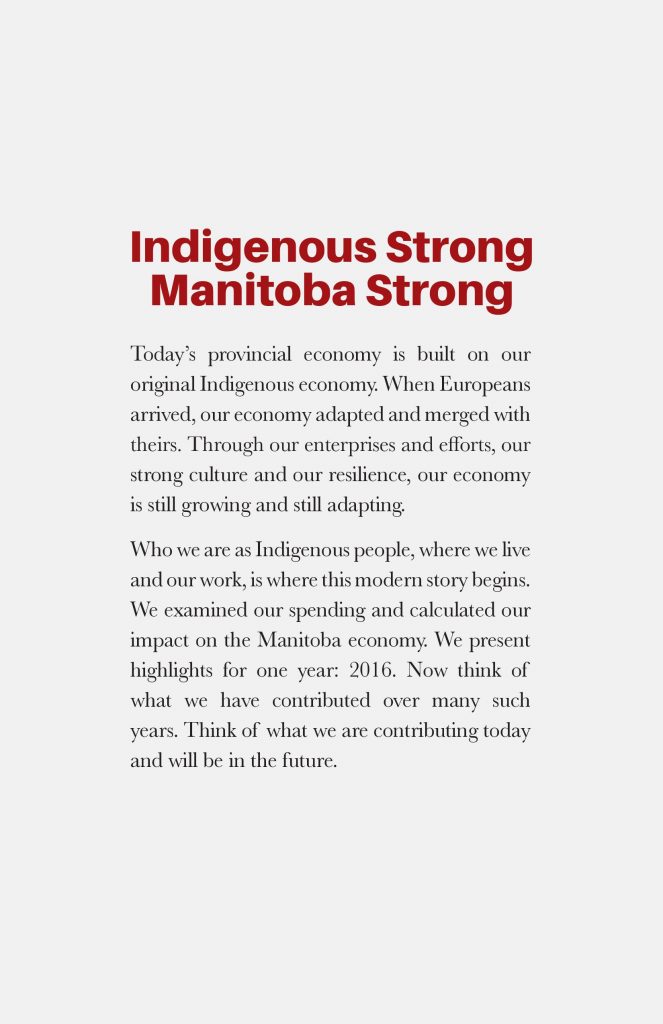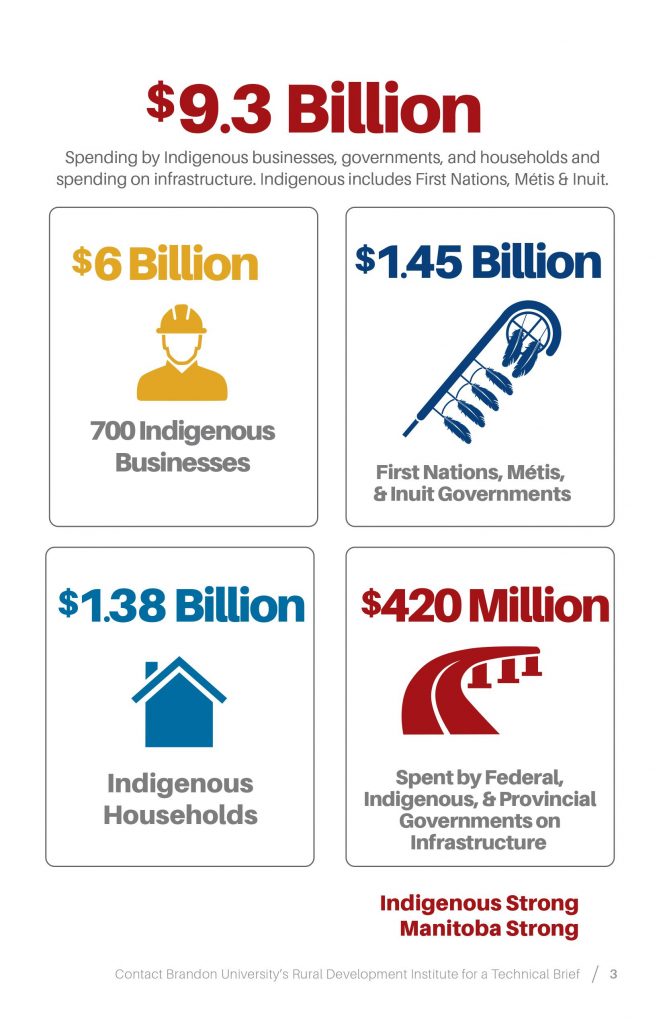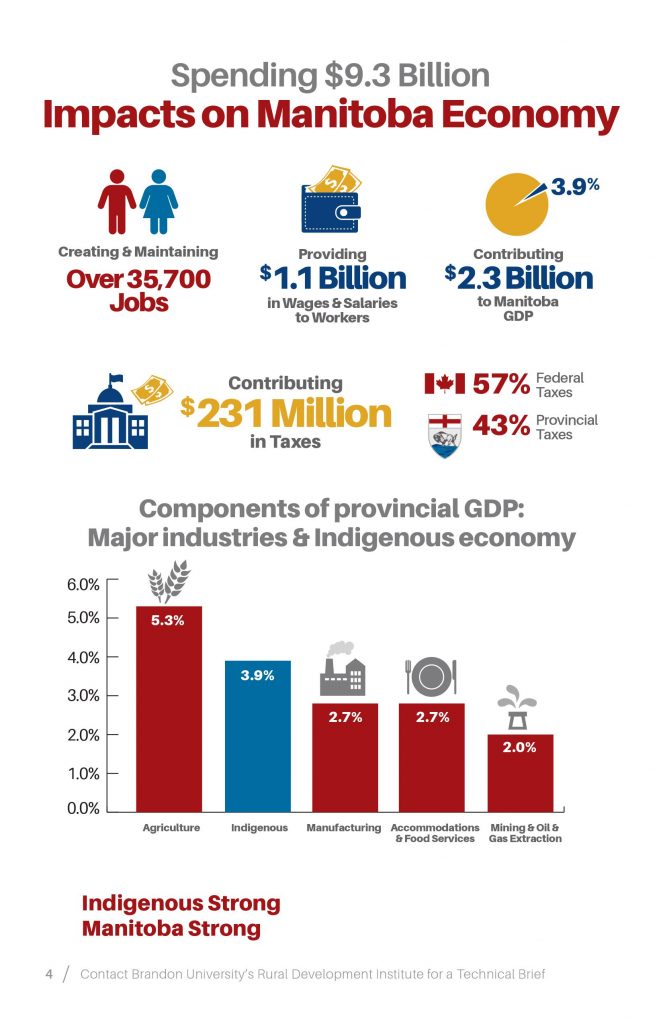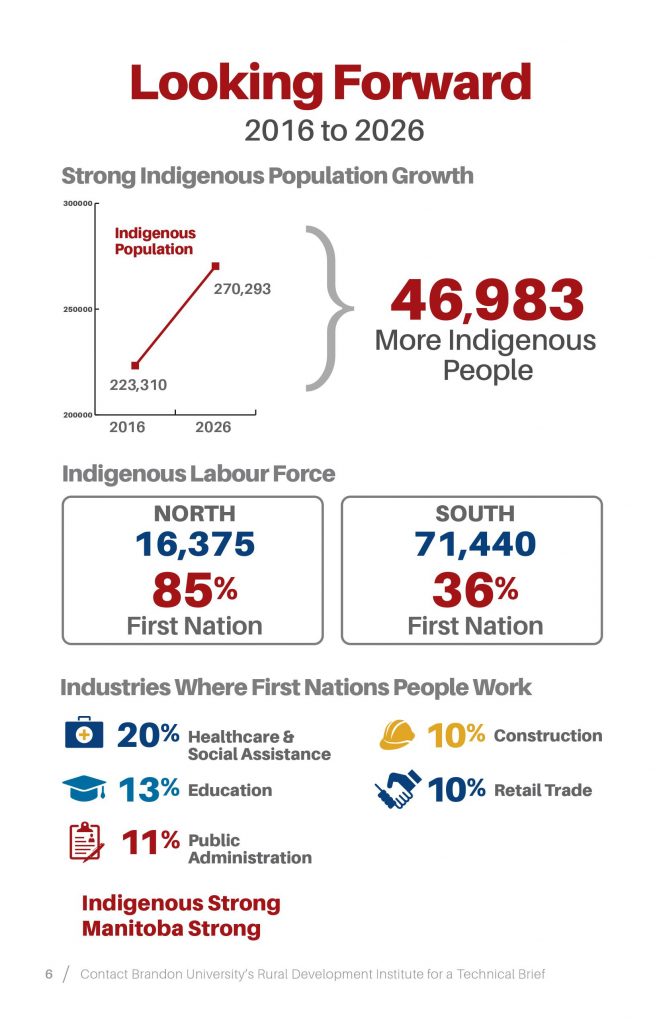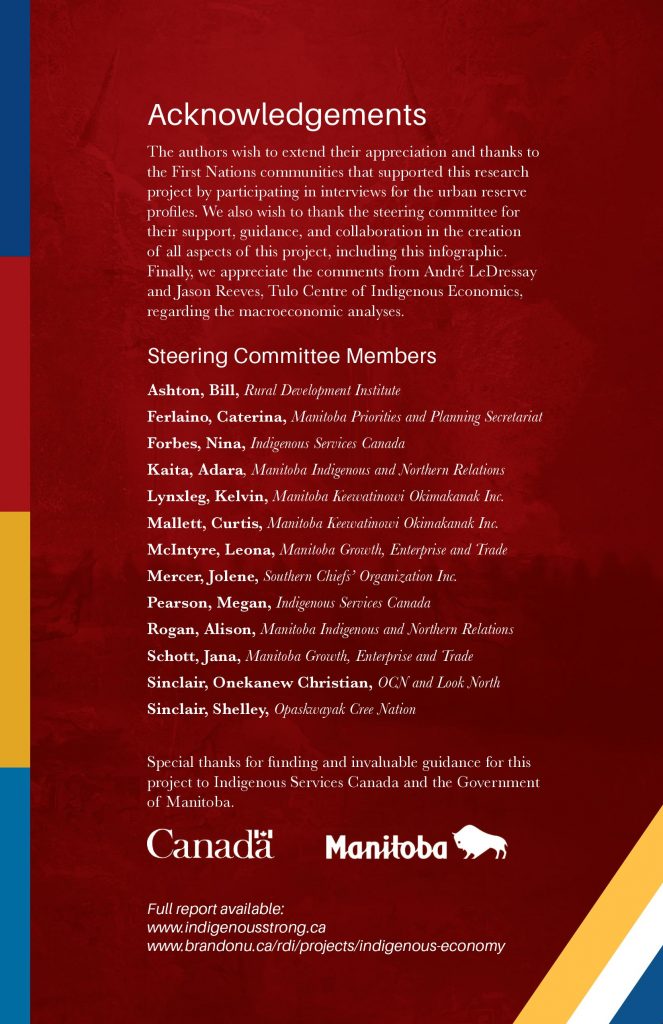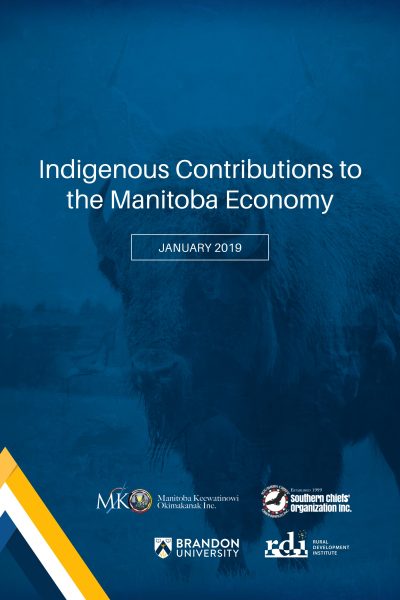Visit Southern Chiefs’ Economic Development Corporation for more information on SCO’s economic development initiatives.
Southern Chiefs’ Organization (SCO) and Manitoba Keewatinowi Okimakanak (MKO) have partnered with Brandon University to research and document Indigenous economic contributions to the broader of Manitoba economy.
This project followed the First Nations principles of Ownership, Control, Access and Possession (OCAP).
Primary Objective
- To quantify spending amounts by Indigenous and First Nations peoples in Manitoba in order to calculate their contributions to the provincial economy.
Secondary Objectives
- To examine existing urban reserves in Manitoba, which are growing in importance as a revenue source for First Nations; and
- To create projections of Indigenous population and labour force.
What is unique about this applied research project?
- estimates on spending by Indigenous and First Nations people in Manitoba
- profiles of urban reserves in Manitoba
- knowledge sharing among the researchers
There are three aspects making this a unique research project. First and most important, there are now estimates on spending by Indigenous and, specifically, First Nations people in Manitoba and the resulting impact on the economy. These contributions are possible by building on the strong Indigenous economy that existed pre-contact. Second, this project profiles urban reserves in Manitoba. The third unique aspect is the knowledge-sharing process among the researchers. Discussions resulting from interviews with the First Nations’ representatives about their urban reserves created a learning opportunity among the SCO and MKO researchers and those at the Rural Development Institute. Each of these aspects has resulted in making this a unique applied research project.
Three major topics form this report. First is the economic analysis of Indigenous (Chapter 2) and First Nations’ (Chapter 3) spending and the related impact on the Manitoba economy. Second, the urban reserve profiles (Chapter 4) are based on interviews with First Nations representatives most familiar with operations and future plans. These three chapters make up the majority of the report. In the third part (Chapter 5), the research team looks forward by presenting population and labour-force projections to 2026 for key variables directly affecting the trajectory of the Manitoba economy. Each chapter is self-contained, meaning relevant materials, references, and appendices are included.



